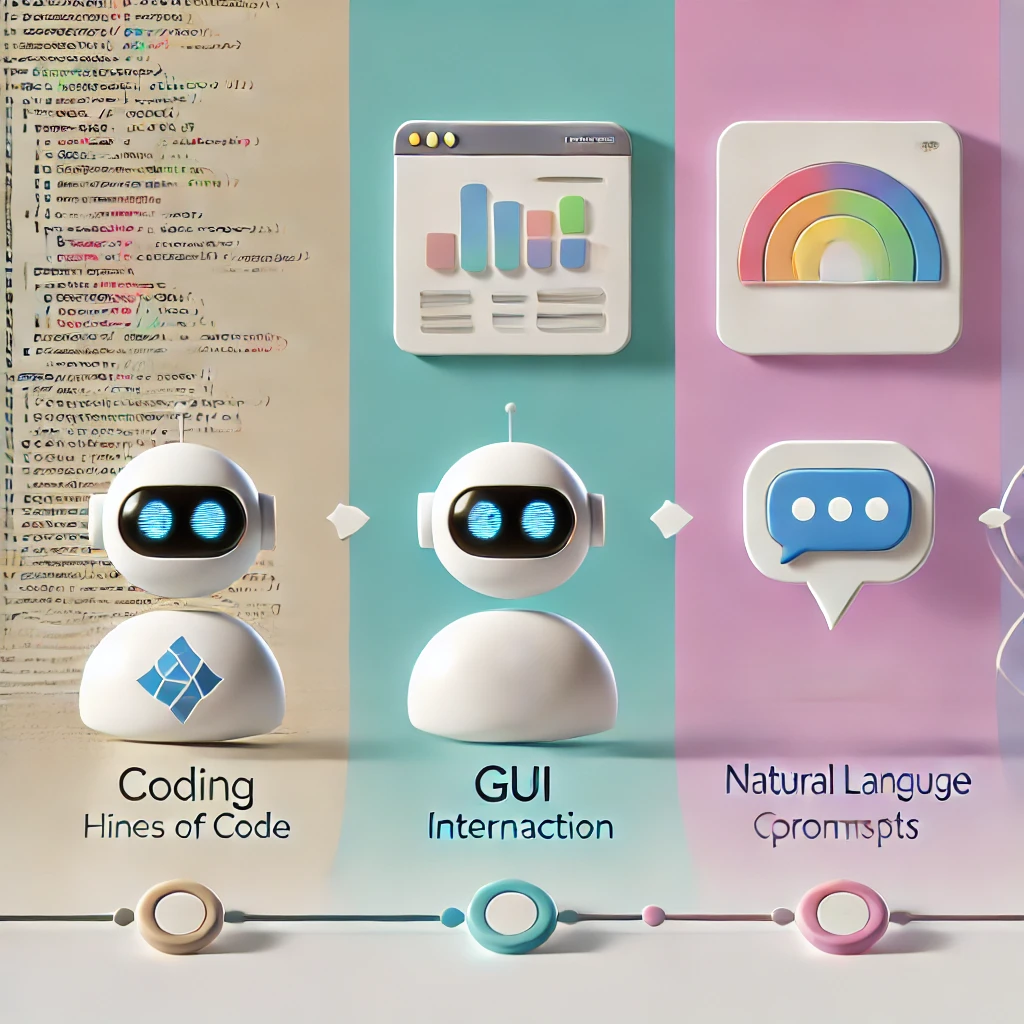In the ever-evolving landscape of technology, one thing has remained constant: the need for effective communication between humans and machines. This communication has undergone a remarkable transformation over the years, democratizing access to complex data operations and computational power. Let’s explore this journey and see how AI is ushering in a new era of efficient human-machine communication.

- The Coder’s Era: Speaking in Code
In the early days of computing, only a select few could communicate with machines. These were the coders, the programmers who spoke languages like SQL or wrote complex algorithms. They were the intermediaries, translating human needs into machine instructions. While powerful, this method was exclusive, requiring specialized knowledge and skills.
- The GUI Revolution: Point, Click, Analyze
As technology progressed, graphical user interfaces (GUIs) emerged, bringing a new level of accessibility. Suddenly, anyone could interact with machines through intuitive dashboards and analytics tools. This democratized data analysis and basic computational tasks, but still had limitations in terms of customization and complex operations.
- The AI Paradigm Shift: Conversations with Machines
Now, we’re entering a new era where AI is revolutionizing how we communicate with machines. Through natural language processing and large language models, we can now interact with computers using plain text, prompts, and conversational language. This marks a significant leap in efficiency and accessibility.
Consider this example prompt:
# Upload CV in English
<<uplad-CV>>
# Instructions for processing the CV
Compile your answer information into a structured, relevant list tailored to the specific freelance opportunity.
1. Use the uploaded English CV as a reference.
2. Create a list of relevant technologies based on the freelance gig description.
3. For each technology and skill, provide project details including years and descriptions.
4. Exclude irrelevant technologies and skills.
5. Format the response as a single markdown code block.
6. Ensure that certain emphasized technologies are included in the list.
7. Use additional information from the pasted "gik-txt" content.
<<paste-gik-txt>>
This prompt effectively communicates a complex set of instructions for data extraction, transformation, and presentation. It’s essentially a SMART (Specific, Measurable, Achievable, Relevant, Time-bound) Extract, Transform, Load (ETL) operation, communicated in natural language.
The AI Advantage:
- Accessibility: Anyone can now request complex data operations without needing to know programming languages or complex query structures.
- Efficiency: Complex instructions can be communicated quickly and clearly in natural language.
- Flexibility: AI can interpret context and nuance, allowing for more adaptable and sophisticated data operations.
- Iteration: Rapid back-and-forth communication allows for quick refinement of results.
- Learning: As AI systems improve, they can better understand intent and provide more accurate results over time.
The Future of Human-Machine Communication
As AI continues to advance, we can expect even more intuitive and efficient ways of communicating with machines. We might see:
- Multimodal interactions combining text, voice, and visual inputs
- AI assistants that can proactively suggest data operations based on context
- Seamless integration of human knowledge and machine capabilities
In conclusion, the evolution of human-machine communication from code to GUIs to AI-driven natural language interactions represents a significant leap in efficiency and accessibility. As we continue to refine these communication channels, we’re not just making machines more powerful – we’re making that power more accessible to everyone. The future of technology isn’t just about what machines can do; it’s about how easily we can tell them what we need done.